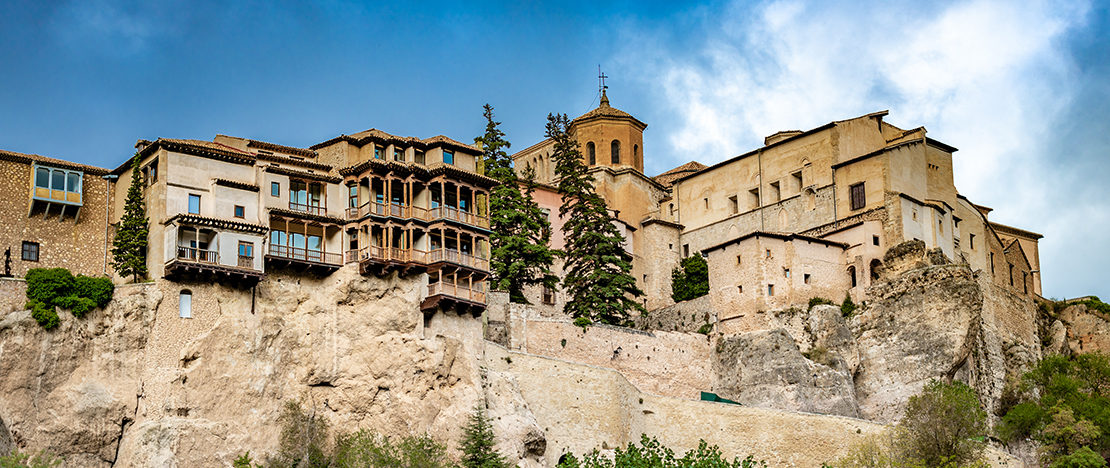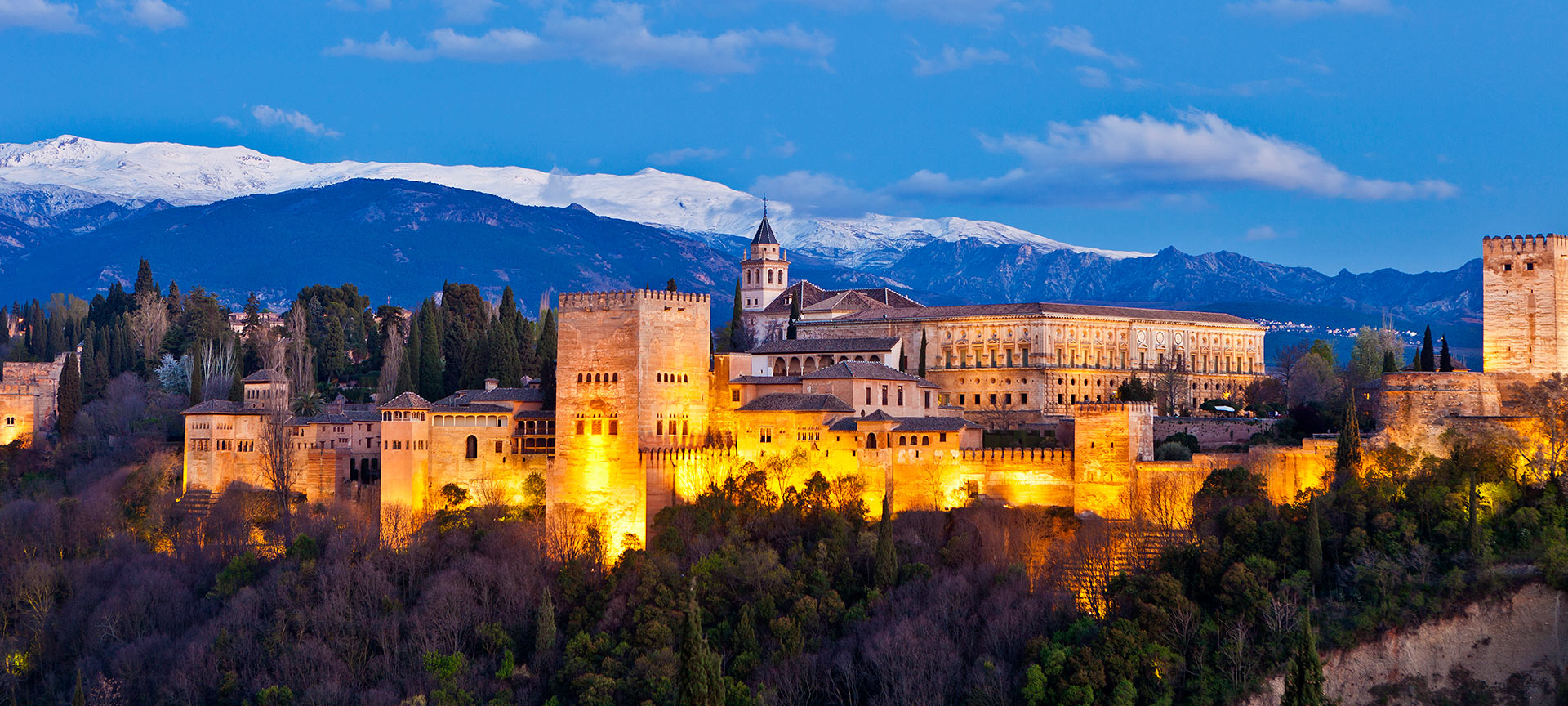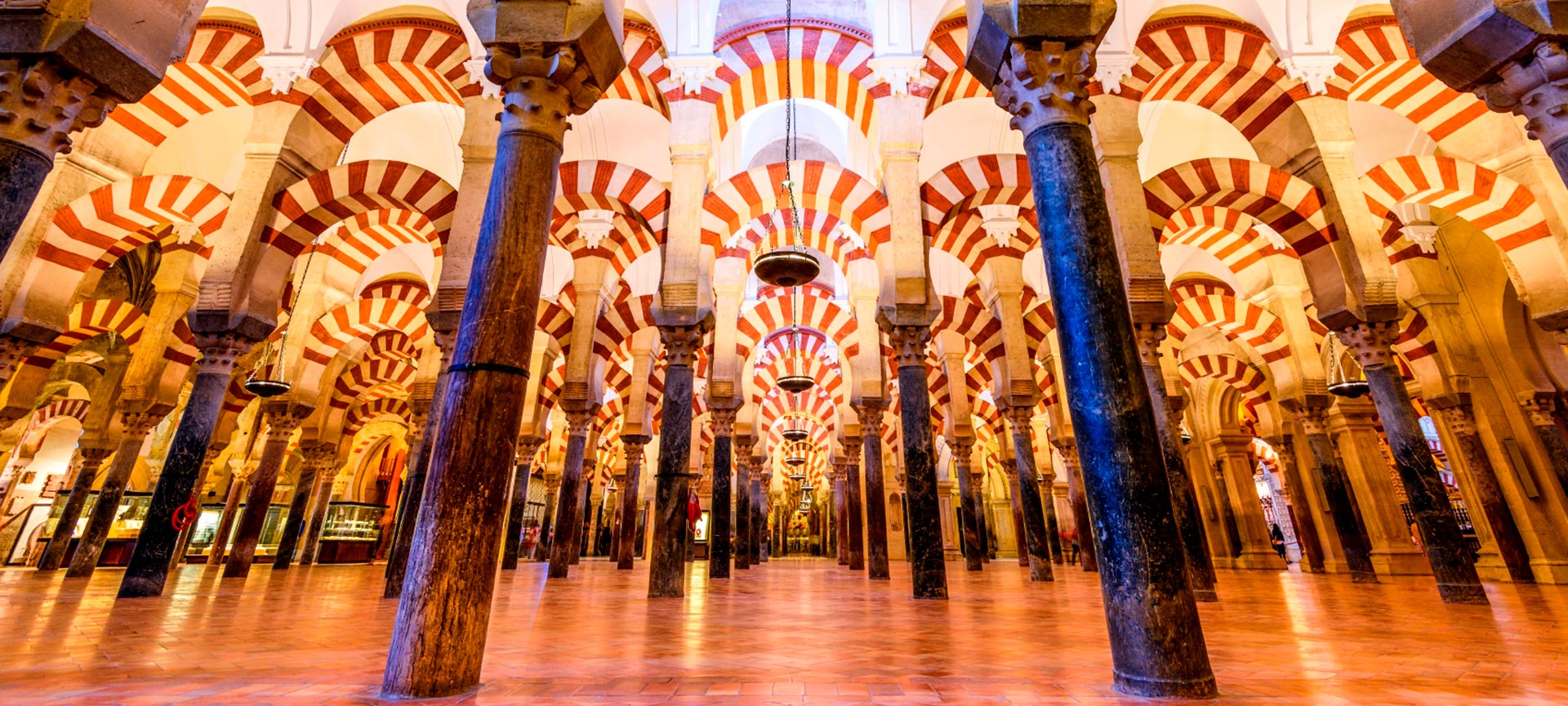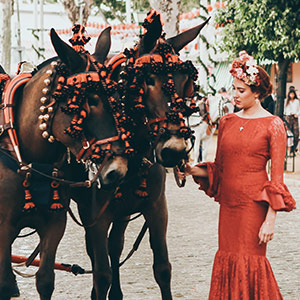
A journey through time and culture across the Spain of legends
Come and explore Spain through networks of tunnels and secret crypts. Follow the trail of mythological lands or let yourself be captivated by stories of love, witchcraft, demons and hidden treasures. All areas of Spain have unusual and mysterious legends that will make you see the places you visit with different eyes. Delve into this fascinating part of Spain's culture.
Debe activar Javascript para poder utilizar este servicio
-

Sant Jordi and the dragon
We start with one of the most famous Spanish legends. The story goes that a long time ago a terrible dragon frightened the inhabitants of a small town in Catalonia called Montblanc. To calm the dragon's fury, they sacrificed one person every day, until it was the turn of the king's daughter. Knight Sant Jordi saved the damsel by stabbing the dragon with a sword and red roses sprang from its blood. The “traces” of this legend survive today in multiple ways. For example, on 23 April, the Sant Jordi and International Book Day turn the city of Barcelona into a huge open-air bookstore and it is customary to give a book and a rose as a gift to your loved ones. In addition, there are many monuments in Barcelona that nod to this history. The most famous is perhaps Gaudí's Casa Batlló, in which this amazing architect designed the roof in the shape of the back of a dragon, with a cross to resemble the knight's sword killing the beast. A true display of imagination.
-

The Alhambra: Eight centuries of stories, romances and betrayals
Shakespeare once said “all curious travellers hold Granada in their hearts, without ever visiting it”. Granada is one of the most beautiful cities on the planet. And the main reason for this is the Alhambra: The city, fortress and palace erected by the monarchs of the Nasrid dynasty of the Kingdom of Granada. There are many legends surrounding this monument that inspired Washington Irving to write “Tales of the Alhambra.” One of them is set in what is perhaps the most emblematic room in the place: Court of the Lions.The story goes that an Arab princess named Zaira fell in love with a young man during her trip to Al-Andalus and, when her evil father found out, he sentenced him to death. She found the king's diary in which he confessed to having killed his real parents. The enraged princess found the king in this courtyard of the Alhambra along with his 11 assistants and, thanks to an amulet, turned them all into stone lions.
-
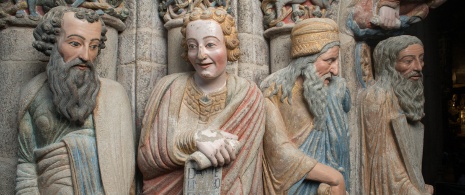
What if you encounter the Santa Compaña while enjoying the Camino de Santiago?
The Camino de Santiago, one of the most famous pilgrimage routes in the world, has many different routes, the main ones running through the north of Spain up to the Santiago de Compostela Cathedral. This is one of those special journeys that one should experience at least once in their life. Arriving in Galicia is getting to know an area full of legends. One of the best known and most lugubrious is that of the Santa Compaña: a procession of hooded lost souls who wander in the dead of night as a premonition of an approaching death. Legend has it that this centuries-old story established a series of protection methods for anyone encountering the Santa Compaña, such as drawing a circle with salt or grabbing one of the many cruceiros that can be found along the Camino.Beyond myths, anyone experiencing the Camino should mingle with the people of Galicia, who will be delighted to share their stories and let them be carried away by this land full of magic.
-

The lovers of Teruel: the story of a tragic love affair
Legend has it that, in the 13th century, in the Teruel area, Isabel de Segura and Diego de Marcilla were deeply in love, but the union was impossible due to Diego's lack of wealth. He went to war to seek his fortune and promised to return in five years. However, when he returned, Isabel had married another man and, although still in love with Diego, she refused to kiss him, so he fell dead. At his funeral, when she finally kissed him, she also lost her life.If you travel to Teruel, in addition to finding a small city full of charm and incredible Mudejar style towers, you will be able to visit the Mausoleum of Los Amantes de Teruel, where you can see the tombs of the lovers. Their figures are sculpted in alabaster and their hands almost touch. A beautiful symbol of impossible love.Another curious fact: you will be able to experience what it would be like to travel in the 13th century, since every February, the city of Teruel organises the festival “Bodas de Isabel de Segura” (Wedding of Isabel de Segura), where this love story is recreated with neighbours dressed in period costumes and where a huge large medieval market is opened for the event.
-
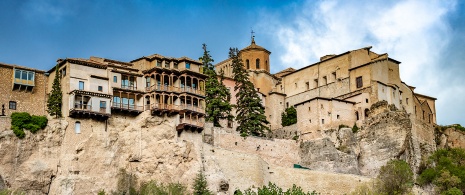
The terrifying “Devil's Cross” of Cuenca
And from one Diego… we move on to another. This time, we travel to the city of Cuenca of the 18th century. If you have ever walked there, you have surely been captivated by the beauty of its Hanging Houses and its San Pablo Bridge at sunset. What you may not have done is sign up for a guided tour in which they tell you the legends and mysteries of this city.Among them, one of the most famous takes you, as we mentioned at the beginning, to the 18th century. It is said that a womanizing boy named Diego was seduced by a young woman of great beauty who convinced him to meet on All Souls' Eve next to the cross in the courtyard of the old Convent of the Descalzos. Legend says that when lifting the girl's dress, lightning illuminated her leg and it was discovered that it was actually a goat's leg, none other than the devil's leg. The boy grabbed the cross to defend himself, which was slashed by Satan. It is said that after that Don Diego locked himself up for life as a monk.
-
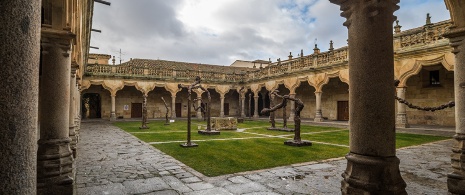
The Salamanca Cave: where the devil gave lessons
The history of Spain is full of legends related to initiation caves, although one of the most famous is this one. It is always a pleasure to stroll around Salamanca, which is known as “the golden city” for the colour of the stone of its monuments at sunset. Among them stands out its University with centuries of history, which turned Salamanca into the city of the wise. What many don't know is that Salamanca also had a parallel underground study space: The Salamanca cave. According to legend, the devil himself taught necromancy classes to seven students for seven years and after this time one of them had to stay with him as payment. Apparently, one of his most famous pupils, the Marquis of Villena, managed to escape, but lost his shadow forever.Access to this passage, which was supposedly in the crypt of the old Church of San Cebrián, has been searched for at different times without finding it. Currently, you can visit the space known as “Cueva de Salamanca” which is the usual scene of cultural events, especially in summer. Will you notice anything strange once there?
-
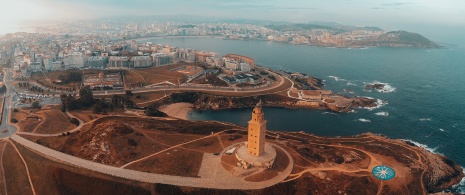
Greek myths in Spain?
You surely know who Heracles is, or Hercules, as he is known in Roman mythology. In Spain, you can find different places associated with this figure, such as the Tower of Hercules in A Coruña (the oldest working Roman lighthouse in the world) or the Caves of Hercules in Toledo, a very interesting cultural centre where you can explore its passages. It is said that it was there where Hercules, founder of the city, established his palaces and where he left a closed chest that hid the prophecy of the disappearance of the Visigoth kingdom. It is said that King Don Rodrigo, by opening that forbidden chest, set the curse in motion and lost his kingdom at the hands of Islam.On the other hand, what if we told you that the mythical city of Atlantis that the Greek philosopher Plato spoke about could have been in Spain? In the 20th century alone, it is estimated that interest in Atlantis has led to the production of some 5,000 books and more than 25,000 articles. For some researchers, this earthly paradise created by Poseidon according to mythology could correspond to the Doñana National Park or to the ancient civilization of Tartessos.
-

San Borondón: The ninth island of the Canary Islands
And speaking of legendary lands, in the popular traditions of the Canary Islands, it is said that there could be a ninth island that appears and disappears: San Borondón. This legend is related to Saint Brendan, an Irish monk of the 6th century who was looking for the promised land and who is said to have found a wonderful island that disappeared when trying to land. There are even old maps that include references to it.Do you think you will be able to observe it during your trip to the Canary Islands? While you try, you can stop by the San Borondón viewpoint in Tazacorte (La Palma). It is a terrace hanging over the Atlantic Ocean that offers spectacular sunsets and is perfect for observing the Milky Way at night.
These are just some of Spain's best-known legends, but there are many more, such as that of the ghosts of the Reina Sofía Museum in Madrid, that associated with the construction of the Segovia Aqueduct or of the witches of Zugarramurdi. Discover other magical legends in Spain's natural spaces.
Travel plans for inspiring you




